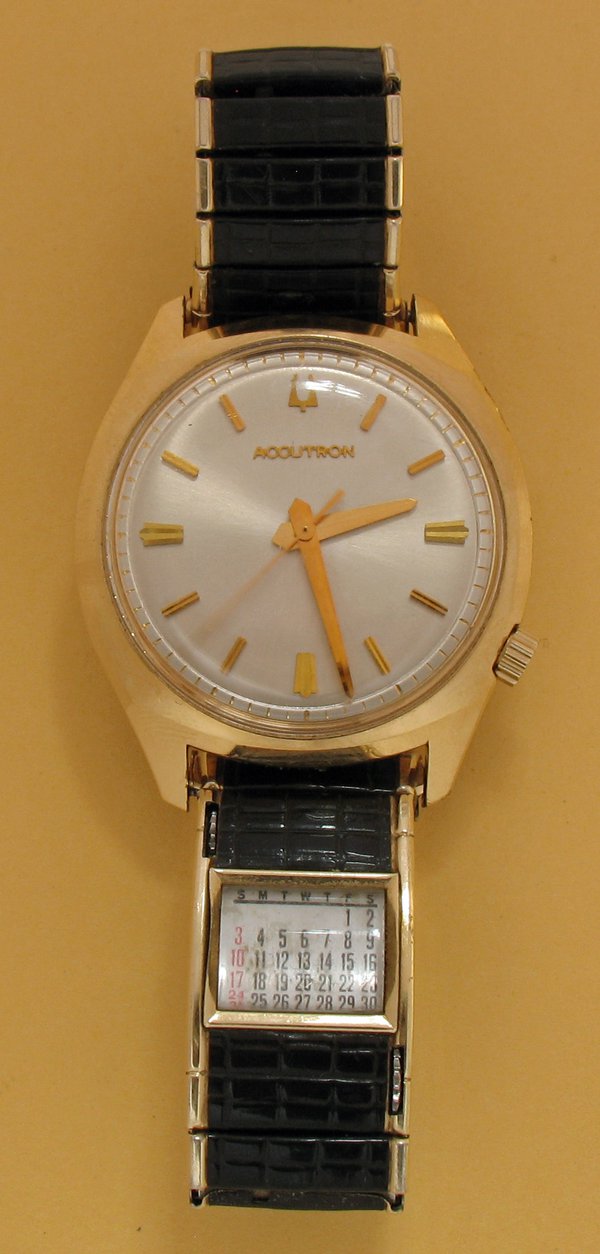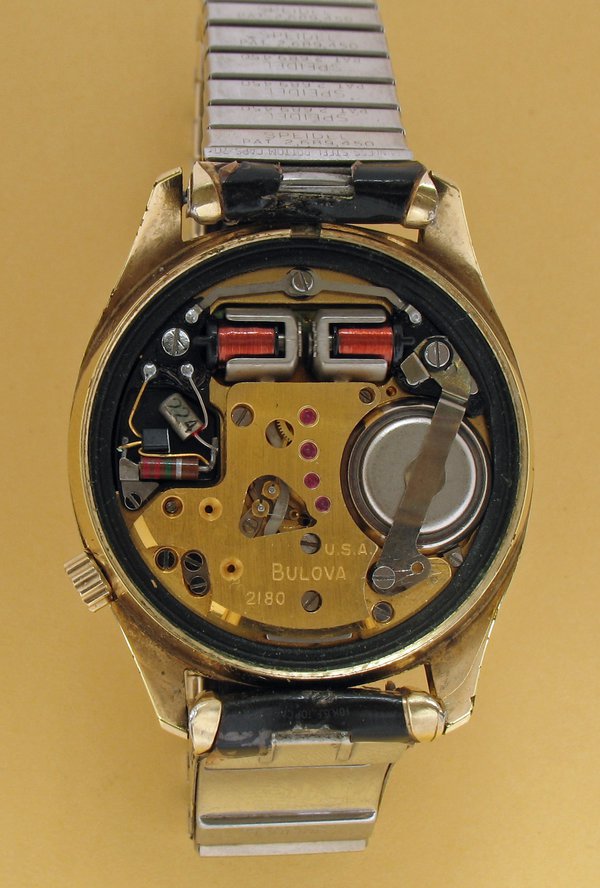The AHS Blog

Clocks in opera
This post was written by Peter de Clercq
If you like music as much as horology (I do!), this is for you. For the links to YouTube you need a loudspeaker or headphones.
In Rigoletto by Giuseppe Verdi, the eponymous court jester hires an assassin to murder his employer, a plan that goes horribly wrong. He meets up with the assassin at midnight (‘mezzanotte’), punctuated by twelve strikes of the turret clock. Watch it here (drag the timer to 1hr 46mins 20sec).
![Rigoletto: ‘The clocks strikes midnight’ – scored twelve times for the camp[ane], the tubular bells in the orchestra](https://ahs.contentfiles.net/media/images/bells-in-Rigoletto-Final-Act-1.width-600.jpg)
In Giacomo Puccini’s Tosca, Rome wakes up with the church bells sounding matins (early morning service). The instrument used in the orchestra is the tubular bells or chimes, metal tubes of different lengths hung from a metal frame, struck with a mallet.
The chiming is heard for more than two minutes, some bells sounding near, others in the distance. Watch it here (drag the timer to 1hr 35mins36 sec).

Modest Mussorgsky’s opera Boris Godunov has a famous scene in which the Russian tsar has visions of the child prince he is suspected of having murdered. This is popularly known as the ‘clock scene’ and as there is no clock on stage nor in the text, this must relate to what goes on in the music.
Indeed, an obstinate, repetitive see-sawing theme is heard in the orchestra, but does it signify chiming or ticking? I am not sure. Watch it here (drag the timer to 0.58 for the ‘clock’ to start).
The most striking (pun intended) appearance of clocks in opera that I know is in Der Rosenkavalier by Richard Strauss. An aristocratic lady has an extra-marital affair with a much younger man (sung by a mezzo soprano, one of the classic ‘trouser roles’ in opera).
Musing on how one day she will lose her young lover, as with the passing of time her charms will fade, she sings about the nature of time:
'Die Zeit, die ist ein sonderbar Ding. Wenn man so hinlebt, ist sie rein gar nichts. Aber dann auf einmal, da spürt man nichts als sie. Sie ist um uns herum, sie ist auch in uns drinnen. In den Gesichtern rieselt sie, im Spiegel da rieselt sie, in meinen Schläfen fliesst sie. Und zwischen mir und dir da fliesst sie wieder, lautlos, wie eine Sanduhr. Oh, Quinquin! Manchmal hör’ ich sie fliessen – unaufhaltsam. Manchmal steh’ ich auf mitten in der Nacht und lass die Uhren alle, alle stehn'
or;
'Time is a strange thing When one is living one’s life away it is absolutely nothing. Then suddenly one is aware of nothing else. It is all around us, and in us too. It trickles across our faces, it trickles in the mirror there, it flows around my temples. And between you and me, it flows again, silently, like an hourglass. O, my darling, at times I hear it flowing – inexorably. At times I get up in the middle of the night and stop all the clocks, all of them.'
The music comes to a stand-still and all you hear is the chiming of a small domestic clock, played in the harps and the celesta – it’s magical. Watch it here sung in original German, with subtitles; drag the timer to 0.19.

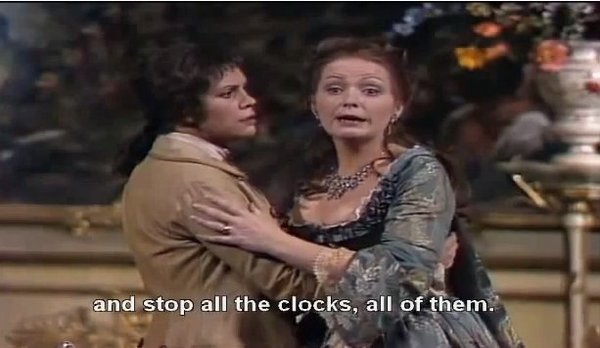
Fine timing
This post was written by Paul Buck
A new exhibition has opened in Room 3 at the British Museum displaying the year going table clock by Thomas Tompion. This magnificent clock celebrates the coronation of William III and Mary II in 1689, and was kept in the royal bedchamber. It was made by a talented and industrious man who was in the right place at the right time.

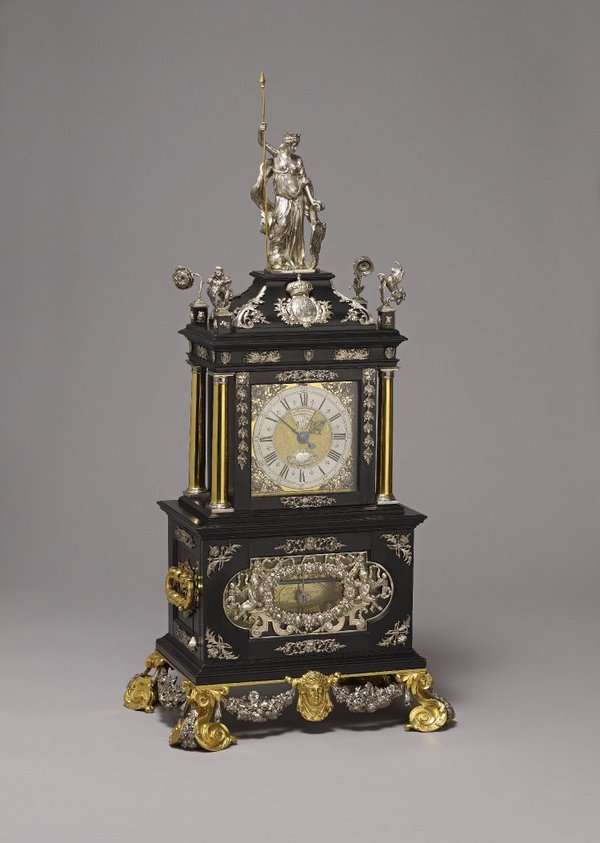
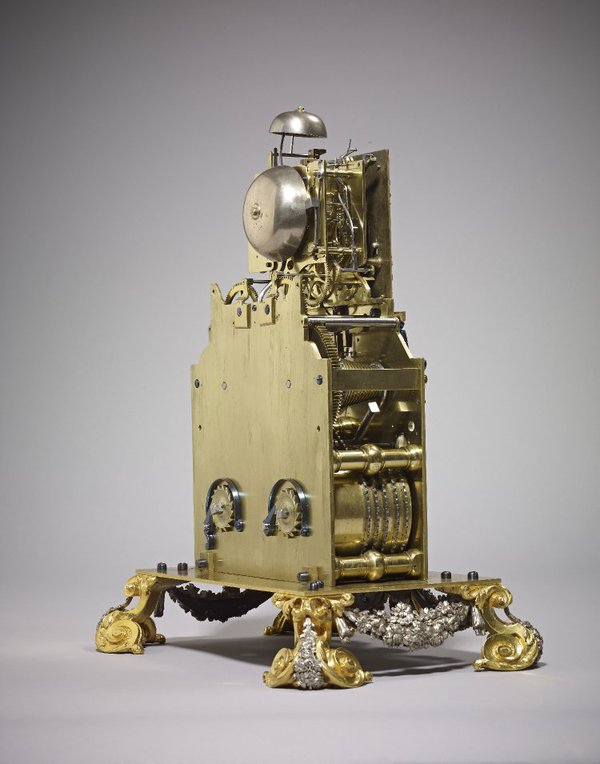
Tompion’s modest beginnings as the son of a Bedfordshire blacksmith are recorded, but after that nothing is known of his whereabouts until he appears in London at the age of 32.
Wherever he had come from, he was extremely well trained in the making of clocks and watches.
London 350 years ago was the ideal place for Tompion’s genius to shine. In the previous century, religious persecution in the Netherlands and France had led to an exodus of Protestants, including many goldsmiths, silversmiths, engravers and watchmakers who established their trades in London.
Despite the Great Fire and the plague that preceded it, 1670s Restoration London was prosperous, with a plentiful supply of wealthy clients to support the burgeoning clock and watch trade. The new accuracy in clocks resulting from the application of the pendulum in 1657 followed by the balance spring in watches in 1675 was of great interest.
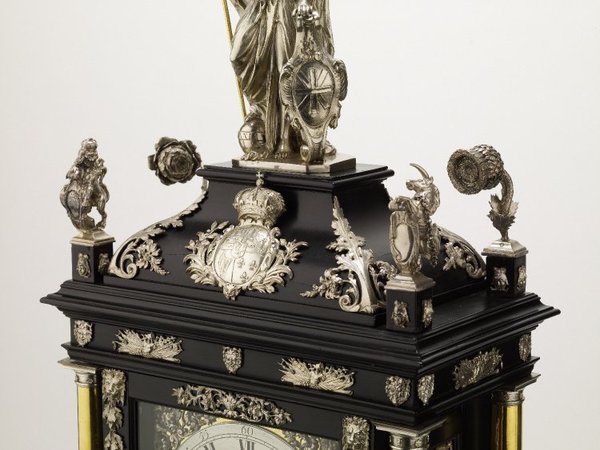
When William died the clock passed to Henry Sydney, Earl of Romney, Gentleman of the Bedchamber and Groom of the Stole. On his death in 1704, it passed to the Earl of Leicester and then to Lord Mostyn and remained in that family until 1982.
It is now known as ‘the Mostyn Tompion’ after its former owners.
The clock continues to keep good time, and is notably ‘year-going’ – it runs for over a year on a single wind. It also strikes the hours, an annual total of 56,940 blows on the bell.
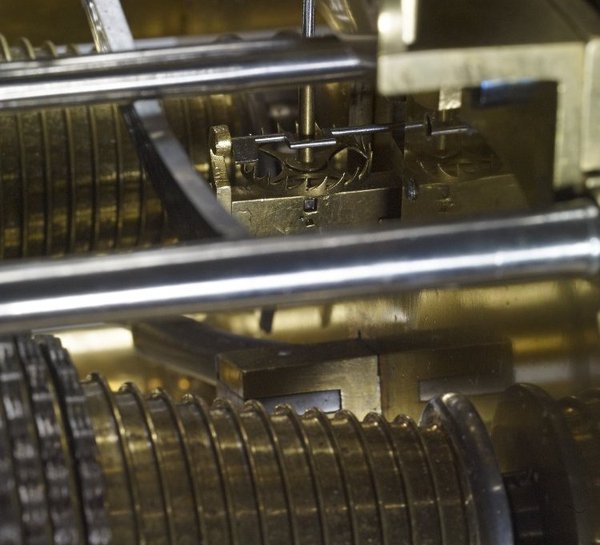
This free exhibition is timed to coincide with the 300th anniversary of Tompion’s death in November 1713 and runs until 2nd February 2014.
If only I knew what the right time is
This post was written by David Thompson
When you want to know the correct time today, you either look at your mobile phone or you look at your radio controlled clock watch or listen to the six pips on the radio. However, don’t do the last one on digital radio as it is quite a bit out of sync with the real time – about two seconds.
Before the introduction of telegraph time signals and the distribution of time, everyone had to rely on a local observation of true solar time – that is, the time shown on a sundial.
Unfortunately, the mean time shown by a clock and the true time shown by a sundial don’t agree throughout the year. Because the earth’s orbit around the sun is elliptical and because the earth’s axis is tilted to the celestial plane by 23 ½ degrees, the sundial (showing apparent or true solar time) and the clock (showing mean solar time) can be different by as much as 15 minutes.
There are four days in the year when the clock and the sundial agree with each other – 15th April, 13th June, 1st September and 25th December.
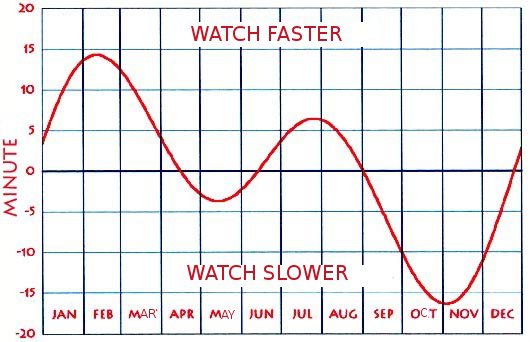
Until 1657 and the introduction of the pendulum, real time didn’t matter much as clocks were so inaccurate that the variations between true and mean time were irrelevant to all except astronomers.
The application of the pendulum to clocks made them capable of much more accurate timekeeping and the same was true when the balance spring was added to the watch in 1675 – measuring time to within a minute a week.
So, in order for an owner to put his clock right by a sundial, he had to know what the difference should be between his sundial reading and the time shown on his clock.
From the latter part of the seventeenth century, tables were published which gave exactly that information. The table shown here is devised so that when a clock is checked at noon, the table shows what time the clock should show.
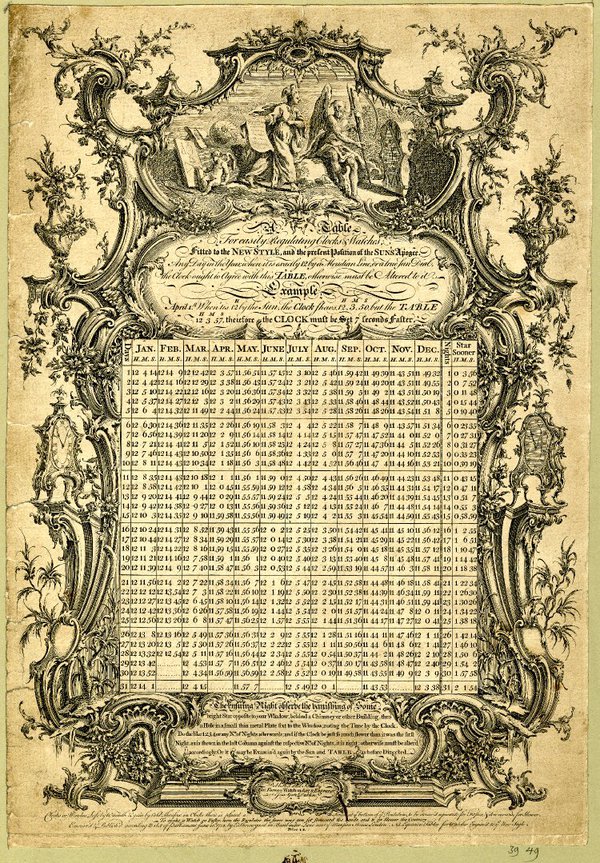
From the later part of the 18th century watchmakers would add a circular advertising paper into the outer cases of pair-cased watches and many of these had the equation-of-time table printed on them for easy reference.
Such papers were produced by top London makers such as Vulliamy in Pall Mall and by provincial makers such as Richard Comber of Lewes in Sussex. It was probably Comber’s customers who needed a table more than someone in the centre of London where the church bells offered a huge variety of ‘right’ time. It is worth bearing in mind, too, that the adjustments could only be done when the sun was shining!

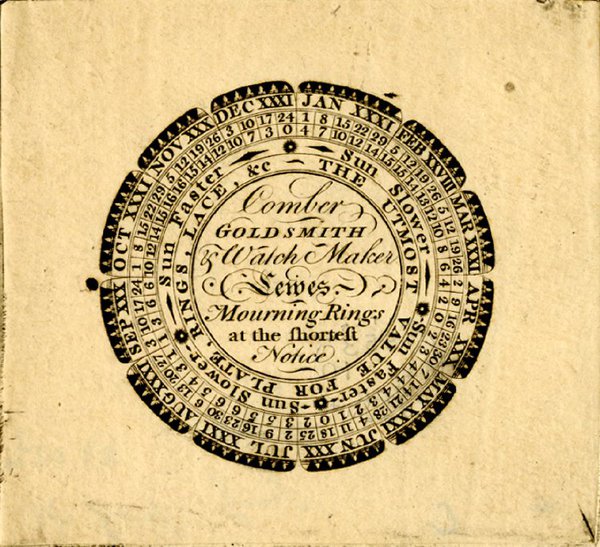
Freak control
This post was written by Oliver Cooke
Continuing our wander through the five elements, we come to the controller – the part of the clock which controls its rate. Let us pass-by the major landmarks (the pendulum, the balance spring and wheel and the quartz crystal) and seek an alternative trail.
With their origins preceding mechanical clocks, compartmented cylindrical clepsydrae (shown in a previous post for their silent operation) have a drum which rotates and descends. Water passes between compartments inside the drum, controlling the rate of rotation.
These were recurrently popular at various times in history and were incorporated in clocks, such as the example illustrated here which was made by Arnold Finchett, London, c.1760. The drum, connected by a line, drives the hand on the dial. This system is reported to provide reasonable timekeeping (at least in non-freezing conditions)!
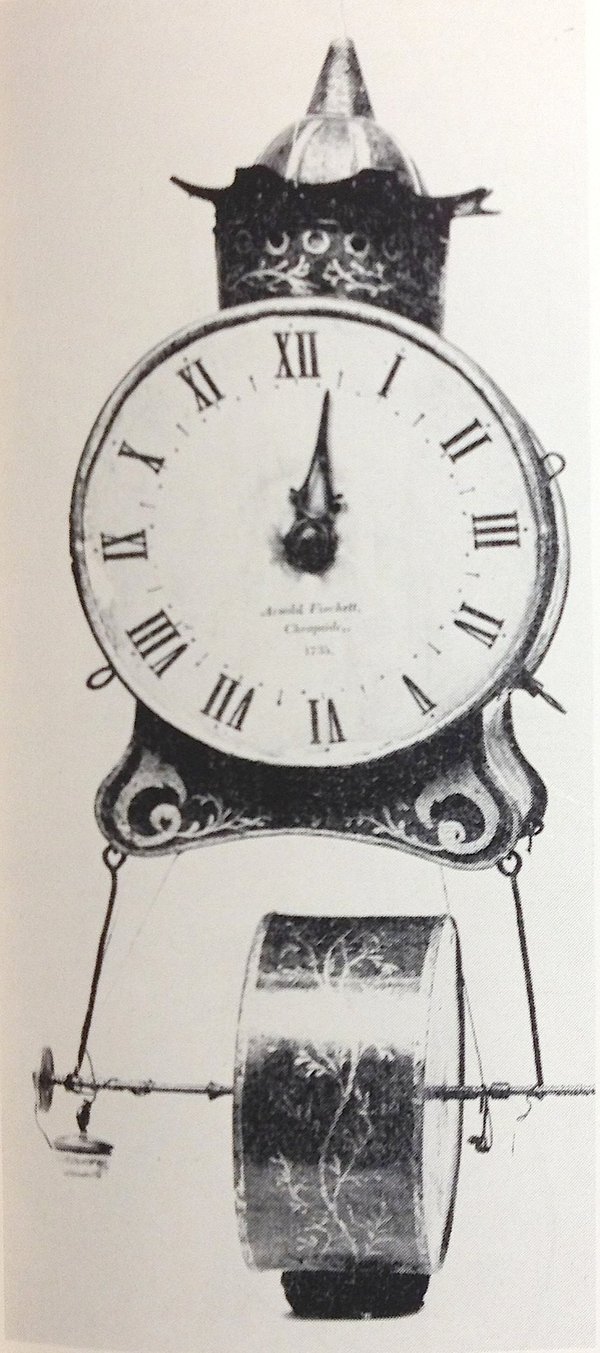
Sir William Congreve (1772-1828) patented his inclined-plane rolling-ball clock design in 1808. Its ball bearing zigzags down a track on the table and actuates a lever at the end of its travel, causing the table to see-saw and the ball to roll back again.
In the example illustrated here, each leg takes thirty seconds. Despite being largely detached from the influence of the movement, the progress of the ball is hampered by any irregularities on the track, generally resulting in awful timekeeping (rather like my daily commute).
Nevertheless, the clock is mesmerising and surveys show that it retains the attention of visitors longer than any other exhibit in Djanogly horological galleries.
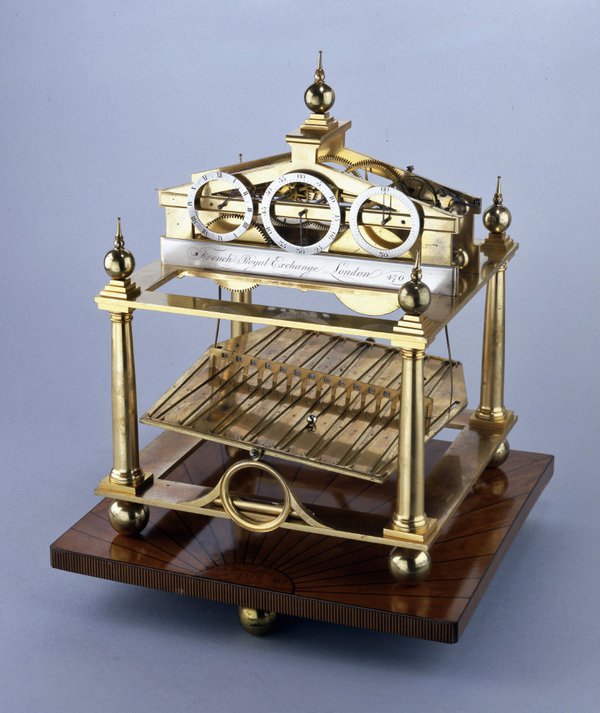
Another clock shown before is the Smiths “Sectric” electric mantel clock. The clock motor is synchronous – i.e. its speed depends on the (very stable) frequency of the alternating current of the mains supply, which thus effectively controls the rate of the clock.
These clocks were very popular from 1930s but were superseded by quartz technology from the late 1960s, largely for the convenience of battery power, which avoided the need for wiring.
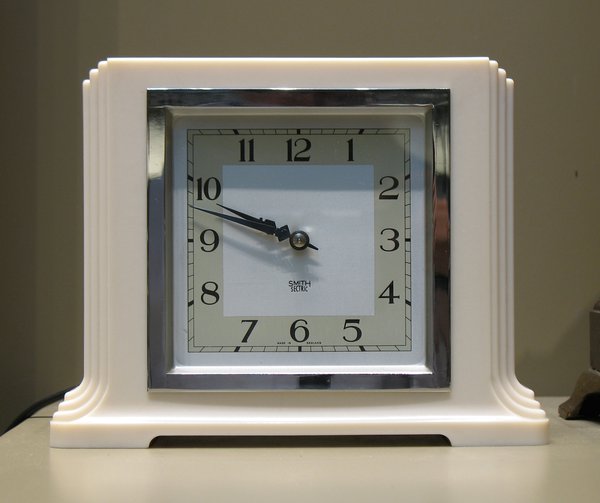
Finally, from 1960 Bulova produced their 'Accutron' watches which incorporated a tuning fork to control their rate. The steady hum of the tuning fork can clearly be heard when the watch is held to the ear.
Despite being excellent timekeepers and very popular, within ten years the introduction of superior and cheaper quartz watches rendered them obsolete.
